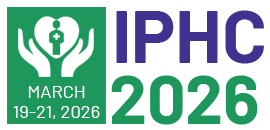Title : The Impact of Covid 19 Isolation Practices on Persons Experiencing Homelessness with Concurrent Disorders A View from Service Providers in British Columbia, Canada
Abstract:
This research examines the impact of the COVID-19 virus on the delivery of services to persons experiencing homeless with concurrent disorders (PEHCD). The research involves two stages, a pilot study in Victoria, British Columbia, Canada and a subsequent larger study involving six other cities with large PEHCD populations. This presentation includes data from the completed Victoria pilot study and a summary of the preliminary findings from the expanded project.
Participants for Victoria research were recruited by reaching out to known persons in organizations providing services to PEHCD. As an interdisciplinary study, three different kinds of organizations were targeted – social, health and criminal justice. A snowball approach was employed to identify participants and a mixed method design informed the methods used. A quantitative instrument with 30 questions was developed for this research to capture participants’ experiences regarding service delivery before and after the advent of COVID-19. Participants were also invited to participate in an interview containing four semi-structured questions. The data for the Victoria study were collected between March and May 2021. The research on the other six cities is currently in progress, with analysis and final results scheduled for completion later this year in preparation for this conference.
Regarding the first stage of the project, a total of 31 service providers from seven organizations participated in the research. Of those, eight volunteered to be interviewed. A total of 21 provided social services and three provided health or criminal justice services. Significantly, a majority of the organizations involved serviced more than 200 PEHCD a day.
An initial review of quantitative results revealed several challenges experienced by participants including: (1) difficulties in accessing information relating to COVID-19; (2) limited access to safety supplies; (3) challenges with providing services and limitations on existing facility design; (4) staff shortages; and (5) increased overdoses due to isolation. Most organizations had adapted their services in response to COVID-19 and some had been invited to participate in meetings to collaborate with other organizations serving PEHCD. Finally, participants also provided examples of challenges where solutions were developed in response to COVID-19.
Although in the early stages, qualitative data analysis shows the effects adaptations to challenges. A health care worker noted that bureaucracy was rearranged to provide a designated coordinator for mental health services. In addition, “pop-up” clinics were provided in areas frequented by PEHCD. Social service agencies rededicated open spaces for program delivery, provided personal safety equipment, and constructed “safe areas” using plexi-glass structures. A mobile shower system was also developed, as were toilet facilities.
This Victoria research revealed several gaps in services for PEHCD resulting from the isolation practices associated with COVID-19. Organizations have been effective in adapting service delivery to meet newly formulated safety protocols. Despite challenges, service providers successfully continue to meet their clients’ needs. However, social isolation practices, transformation of service delivery, and the resulting gaps in services resulting from the virus have further marginalized a disadvantaged population. Further exploration of this issue in other cities in BC will augment the Victoria study. Policy implications and recommendations will follow from this expanded research



